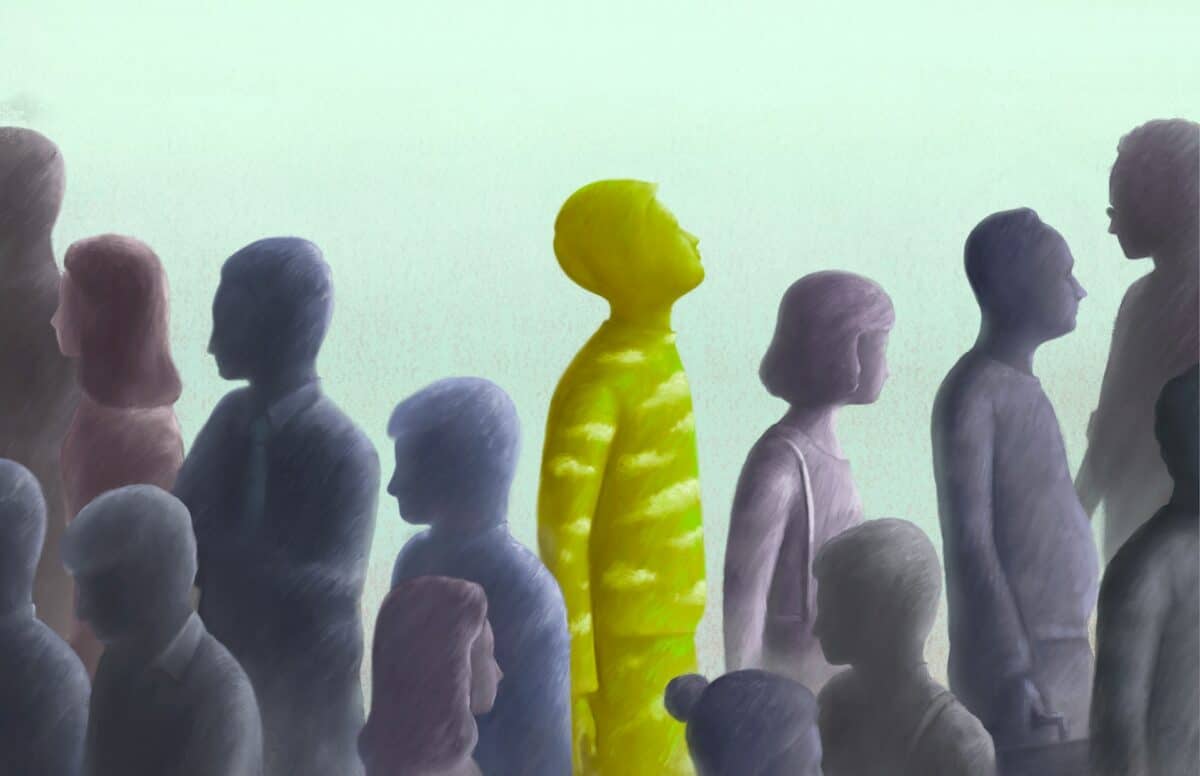(Photo by fizkes on Shutterstock)
In a nutshell
- New research in mice shows the brain learns complex patterns through simple exposure — no rewards needed.
- Neural changes were nearly identical between reward-trained mice and those only passively exposed to visual stimuli.
- The findings could reshape how we understand human learning, and influence future AI training methods.
ASHBURN, Va. — You’re relaxing on a park bench, zoning out on a walk, or aimlessly wandering through a new mall. You’re not trying to learn anything. But according to research from the Janelia Research Campus, your brain might be busy learning anyway.
A team of neuroscientists has discovered something that adds a new layer to the way we learn. By recording from tens of thousands of neurons simultaneously in mice, they found that the brain can develop remarkably sophisticated pattern recognition abilities through exposure alone — without any rewards, feedback, or conscious effort.
“Even when you are zoning out or just walking around or you don’t think you are doing anything special or hard, your brain is probably still working hard to help you memorize where you are, organizing the world around you, so that when you’re not zoning out anymore — when you actually need to do something and pay attention — you’re ready to do your best,” said Janelia Group Leader Marius Pachitariu in a statement.
How Scientists Tested Brain Learning Without Rewards
Led by postdoctoral researcher Lin Zhong, the team designed an experiment to separate different types of learning. Mice were placed in a virtual reality setup and allowed to run through corridors decorated with various naturalistic textures, like leafy or circular patterns. One group received rewards (water) when they correctly responded to certain patterns. Another group experienced the same visuals but received no rewards at all.
“I was very surprised,” Zhong said. “I have been doing behavioral experiments since my PhD, and I never expected that without training mice to do a task, you will find the same neuroplasticity.”
To probe this plasticity (the changes in neural activity that underlie learning) the researchers used a specialized imaging system that recorded the activity of up to 90,000 neurons at once. They also used a visualization tool called Rastermap to analyze neural patterns on a massive scale.
Even if you’re just walking around aimlessly, your brain is still learning about the world around you. (Image by Getty Images in collaboration with Unsplash+)
Mice Without Rewards Learned Just as Well
The team found that both groups of mice — those trained with rewards and those just passively exposed to the visuals — developed nearly identical changes in their visual brain regions. Most of the plasticity appeared in areas responsible for higher-level visual processing, especially in what scientists call the medial higher visual areas (HVAs).
This unsupervised exposure primed the mice to learn faster later. When given a new pattern recognition task, mice that had passively explored the environment picked it up significantly quicker than mice seeing the patterns for the first time.
“It means that you don’t always need a teacher to teach you: You can still learn about your environment unconsciously, and this kind of learning can prepare you for the future,” Zhong said.
What Your Brain Is Doing While You’re Not Paying Attention
While the study was done in mice, the results offer tantalizing implications for human learning. The brain seems to build internal models of the world just through exposure, potentially helping us learn new tasks more efficiently when the time comes.
The research revealed that different parts of the brain specialize in different kinds of learning. Unstructured, exploration-based learning seems to activate one set of regions, while goal-directed, task-based learning triggers another. In task-trained mice, a distinct signal appeared in the anterior brain areas that specifically tracked expected rewards, a feature not seen in the passive exposure group.
“It’s a door to studying these unsupervised learning algorithms in the brain,” said Pachitariu. “And if that’s the main way by which the brain learns, as opposed to a more instructed, goal-directed way, then we need to study that part as well”.
Beyond Vision: A New Understanding of Learning
Although the experiment focused on visual processing, the implications go far beyond sight. This dual-track model, where unsupervised learning builds foundational representations and supervised learning adds meaning, may underlie how we acquire music, language, social cues, or even abstract reasoning skills.
The findings, published in Nature, also point toward more biologically inspired approaches to artificial intelligence. Most machine learning systems rely on massive datasets with labeled inputs. But if animal brains can do so much with exposure alone, future AI might learn more efficiently by mimicking this unsupervised strategy.
“It’s entirely possible that a lot of the plasticity happens just basically with the animal’s own exploration of the environment,” Pachitariu said.
In the end, the study paints a compelling picture of a brain that’s always working behind the scenes—even when you’re not. Every glance, every moment of visual input, might be shaping how you understand the world. So the next time you think you’re zoning out, remember: your brain may be getting smarter anyway.
Paper Summary
Methodology
Using two-photon mesoscopy, researchers recorded from 20,000 to 90,000 neurons in the visual cortices of 19 mice. Mice were split into three cohorts: reward-trained, passively exposed, and a control group shown only simple patterns. Visual corridors featured naturalistic textures to engage higher-order perception, and all activity was tracked during running states to maintain consistency.
Results
Rewarded and unrewarded mice both showed strong neural plasticity in medial HVAs, with similar selectivity for trained patterns. Pre-exposure to visual environments significantly accelerated learning of later tasks. Only reward-trained mice developed a “reward prediction” signal in anterior brain regions. Neural changes were specific to complex naturalistic textures and did not occur with simple grating patterns.
Limitations
The study was conducted exclusively in mice, so while mechanisms are likely to be conserved, direct extrapolation to humans requires further work. The learning tested was primarily visual and relatively simple, so broader cognitive processes remain to be explored.
Funding and Disclosures
The research was funded by the Howard Hughes Medical Institute at the Janelia Research Campus. All animal experiments were conducted under institutional ethical guidelines. No competing interests were declared.
Publication Details
Zhong, L., Baptista, S., Gattoni, R., Arnold, J., Flickinger, D., Stringer, C., & Pachitariu, M. (2025). “Unsupervised pretraining in biological neural networks,” was published in Nature in 2025. DOI: 10.1038/s41586-025-09180-y


